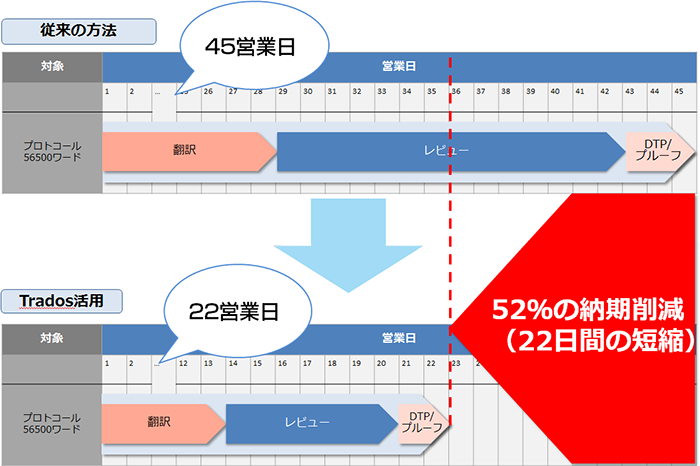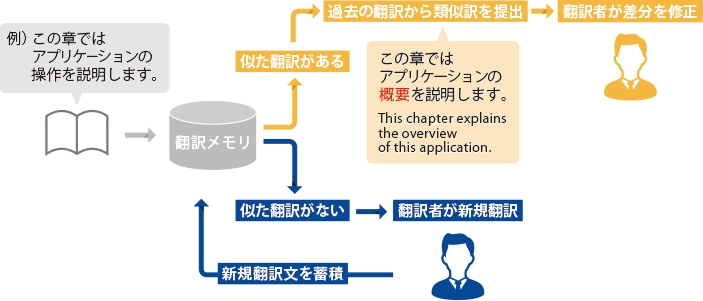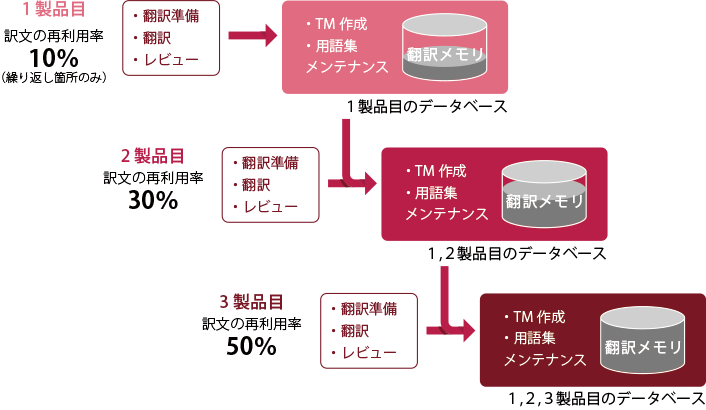Achieve reduced translation delivery times with translation support tools Trados/Phrase TMS
Achieving shorter delivery times with translation tools Trados/Phrase TMS
Benefits of Trados Translation
Trados and Phrase TMS (formerly known as Memsource) are translation support tools used globally, including in the LIT-related translation department.
By registering the translated Japanese-English pairs in memory (translation memory) and utilizing the translated text when similar source texts are available, we can improve quality, shorten translation time, and reduce costs.

Examples of Reduced Delivery Times
1 Clinical Trial Protocol 56,000 Words English to Japanese Translation
For example, in the case of a 56,000-word English to Japanese translation, if done manually by one translator and one reviewer without using translation support tools,
・Translation: 28 business days
・Review: 13 business days
・DTP Proof: 3 business days
Total: 45 business days
When using Trados/Phrase TMS,
・Translation: 13 business days
・Review: 6 business days
・DTP Proof: 2 business days
A total of 22 business days and a 52% reduction in delivery time is possible.

Why is it possible to shorten delivery times?
In Trados/Phrase TMS, pairs of translated texts are registered in the database as memory (translation memory) after being translated once.
As the translation progresses, if there are similar source texts, the translation memory will be automatically detected, allowing for efficient translation work by utilizing the previously translated texts. Parts that do not match the data in the translation memory will be translated by the translator as usual, and that content will be registered in the translation memory.
The translation content is stored in the database in real-time, which increases efficiency as work progresses. By using translation memory, more efficient and accurate translations can be achieved.

Cost reduction process with Trados/Phrase TMS
With Trados/Phrase TMS translation, not only can deadlines be shortened, but costs can also be reduced.
By accumulating translation memories in the database with each completed project, we can improve the reuse rate of translations and reduce translation costs.

* The reuse rate is an example.


